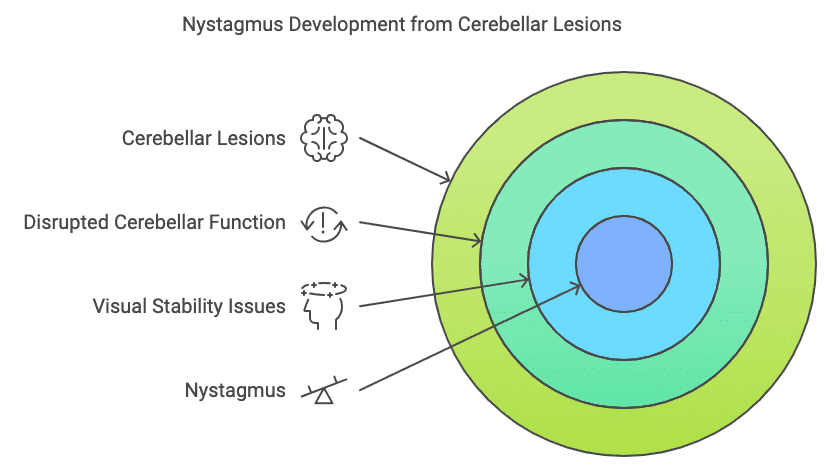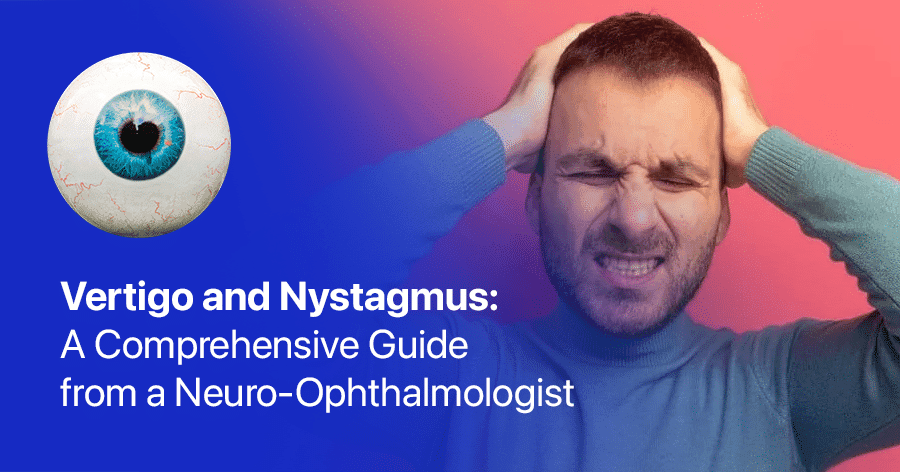
Understanding Congenital Nystagmus in Adults: A Neuro-Ophthalmologist’s Perspective
Congenital nystagmus is a fascinating condition that presents unique challenges and characteristics when observed in adult patients. As a neuro-ophthalmologist specializing in adult care, it’s crucial to understand how this condition manifests and how it differs from acquired nystagmus. Let’s dive into the key aspects of congenital nystagmus in adults.
What is Congenital Nystagmus?
Congenital nystagmus is a condition characterized by involuntary eye movements that are present from birth or early infancy. The most striking feature of this condition in adults is the presence of “jumping eyes” without the symptom of oscillopsia (the perception of the world moving).
Key Characteristics of Congenital Nystagmus in Adults
- No Oscillopsia: Despite the visible eye movements, patients don’t experience the sensation of the world moving. This is a crucial differentiating factor from acquired nystagmus.
- Convergence Dampening: Interestingly, the nystagmus often reduces when the patient focuses on near objects. This convergence effort can lead to better near vision compared to distance vision.
- Null Point: Many patients have a “null point” – a specific eye position where the nystagmus is minimal or even absent. This null point is often in the primary position (looking straight ahead), which is beneficial for the patient.
- Gaze-Uniplanar Movement: The nystagmus typically remains horizontal in all directions of gaze, even if the amplitude or frequency changes.
- Inverted OKN Response: Patients with congenital nystagmus show an inverted optokinetic nystagmus (OKN) response, which is opposite to the normal response.
- Sleep Patterns: The nystagmus is often reduced or absent during sleep.
- Latent Component: Covering one eye may worsen the nystagmus, revealing a latent component.
Implications for Adult Patients
For adults living with congenital nystagmus, several factors come into play:
- Adaptation: Over time, the brain adapts to the eye movements, which is why patients don’t experience oscillopsia.
- Head Positioning: Some patients may adopt an anomalous head position to align their eyes with their null point for better vision.
- Visual Acuity: Despite the constant eye movement, many patients can achieve good visual acuity, especially at near distances.
When to Be Concerned
If an adult with known congenital nystagmus suddenly experiences oscillopsia, it’s a red flag. This could indicate that something has changed, potentially moving their eyes outside their usual suppression zone. Common causes include:
- Development of strabismus
- Sixth or third nerve palsy
In such cases, further investigation, including brain imaging, may be necessary to rule out new neurological issues.
Stay Informed with “The Nystagmus Book”
If you’re looking to deepen your understanding of nystagmus and stay up-to-date with the latest research and management strategies, I invite you to check out my book, “The Nystagmus Book.” This comprehensive guide contains all the legitimate, up-to-date information about nystagmus as of 2024, including the most recent research findings and best practices for managing the condition.
In a world where misleading information about nystagmus is unfortunately common, “The Nystagmus Book” offers a reliable, science-based resource. It’s packed with practical tips, the latest treatment options, and insights from my 20+ years of research in the field. Whether you’re living with nystagmus, caring for someone who is, or simply want to learn more about this condition, this book is an invaluable resource.
Conclusion
Understanding congenital nystagmus in adults is crucial for proper diagnosis and management. While the condition is present from birth, its manifestation in adulthood presents unique challenges and characteristics. As eye care professionals, recognizing these features helps us provide better care and guidance to our patients living with this condition.
Remember, if you have any concerns about your vision or eye movements, always consult with an eye care professional for a thorough evaluation.




